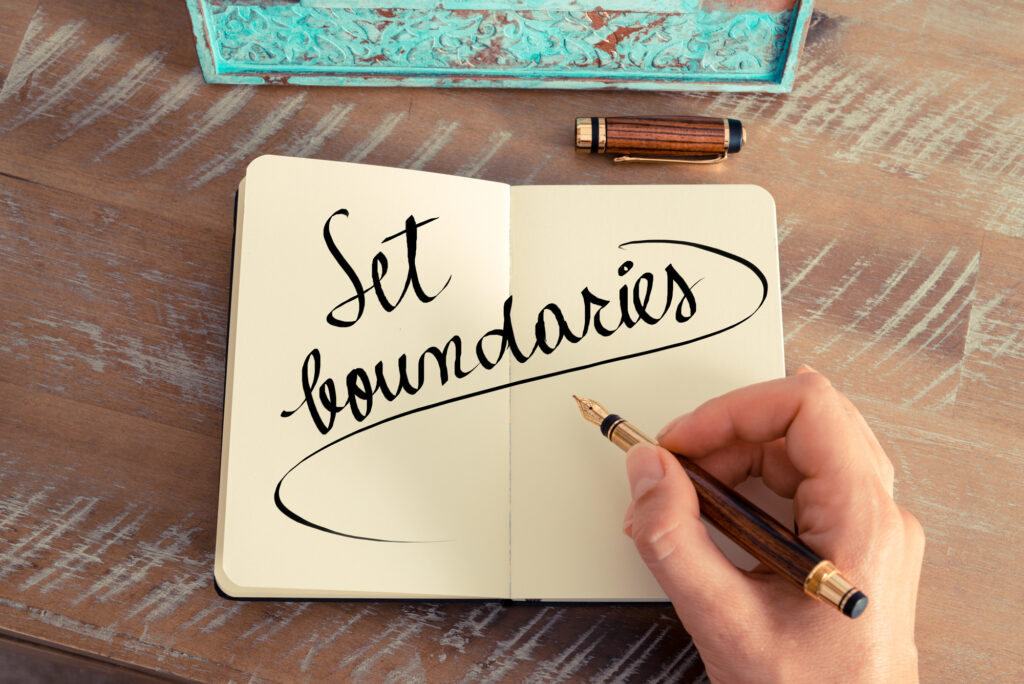What Are Some Examples of Setting Healthy Boundaries in Addiction Recovery?
There are clear-cut situations where boundaries are needed immediately, such as abusive situations or when violence is present. And there are other situations where you may not realize the need to set limits because the violations might be subtle. For example, we might justify someone’s inappropriate behavior, blame ourselves for things that are not our fault, feel shame, or doubt our decision making abilities.
How we feel in any interaction is our best indicator for knowing when to set a clear boundary. Here are some examples of questions you might ask yourself to gauge your feelings:
- Is your stomach in a knot? Maybe you know that this situation isn’t good for you.
- Are you feeling angry or resentful? Perhaps too much is being asked of you, or you are asking too much of yourself, and you need to say no in a kind way.
- Are you feeling confused? Maybe you are feeling manipulated and need to take some time to figure out whether you want to be involved.
Each situation is different. For instance, as a landlord I may decide I am not willing to allow pets or smoking in my rentals. However, if a pet is a therapy dog, I will rent to its owner because it is necessary for the renter to function well.
In personal relationships, our values guide our boundaries. Here are some examples of setting boundaries in recovery from alcohol or drug addiction:
- If my loved one, addicted or not, asks me to lie for her, I need to think about how I feel about myself when I lie. Because my value system says it is not good for me to lie, I will refuse that request.
- If I have a loved one in recovery, or a family member who is a patient in an addiction treatment program, I will think about whether my use of alcohol or my relationship with him is most important to me, and act accordingly, based on my own values.
- If I am addicted to alcohol, I will think about which is more important: My sobriety or attending a family function where everyone will be drinking. If I decide to attend, I will plan, in detail, how to protect my sobriety. I may just go for a short time. I will have a plan for how to leave and what to do in order to prevent relapse.
What’s the First Step for Setting Boundaries?
Begin by asking yourself: “What is my motive for setting this boundary?”
This can be a difficult question if your loved one has drug or alcohol addiction because you’ve likely been consumed with their needs, feelings and well-being during active addiction and not as “in touch” with your own feelings, needs and well-being. Likewise, if you are in recovery from addiction, it’s important to recognize your motives for establishing clear boundaries so you can readily identify any early warning signs of thoughts or behaviors that could lead to relapse.
If you have learned to practice self-focus and you are confident your motive is about self-care and not to change or control others, then you are ready to set healthy boundaries
What’s the Best Way to Communicate Boundaries?
Al-Anon says it best: “Say what you mean, mean what you say, just don’t say it mean.”
In other words, manners matter when communicating your boundaries with others. We think better of ourselves when we are direct, honest and respectful. And when we aren’t confrontational, others are more likely to listen.
Talking about our feelings and sharing our personal needs can put us in a vulnerable state. In order to remove the fear of judgement and assumptions, use “I” statements, stick to the facts, and keep the conversation about your experience rather than focusing on the other person. An example might be, “I feel lonely when I am by myself on my birthday” followed by “I would really like to spend my next birthday with you” or “maybe I will arrange a get together next year.”
“I” statements are less likely to provoke a defensive response but, remember, the purpose of setting boundaries is to let someone know you are not okay with their behavior. The person who is impacted by the boundary may still react. If you are setting a healthy boundary—from a place of self-care—you will be better able to acknowledge the reaction, but not try to fix it.
https://www.hazeldenbettyford.org/ Read More.

